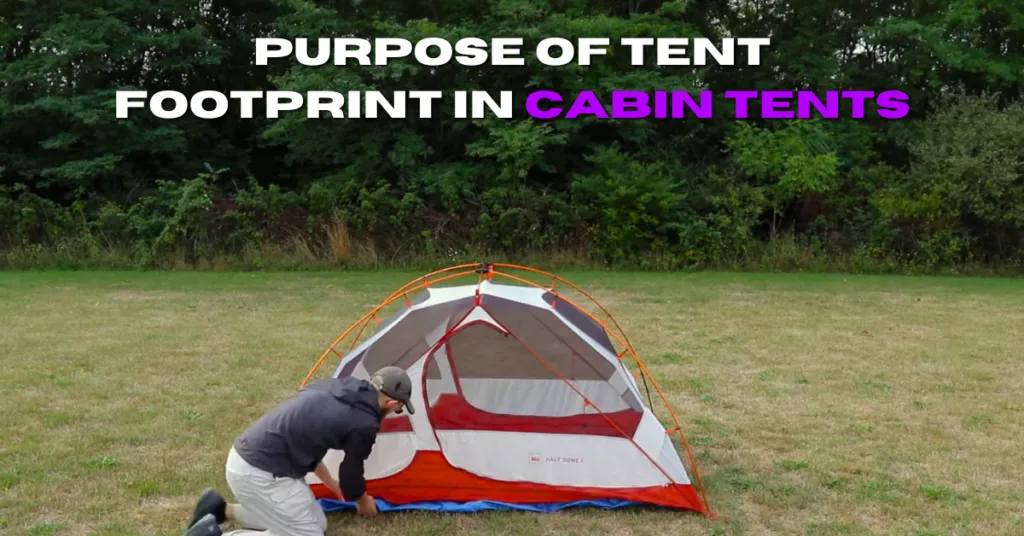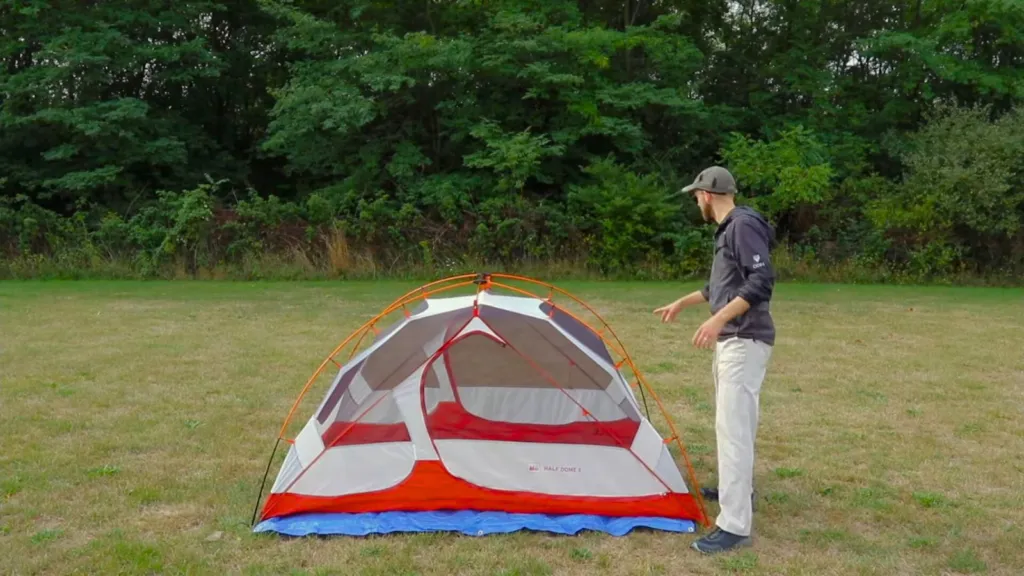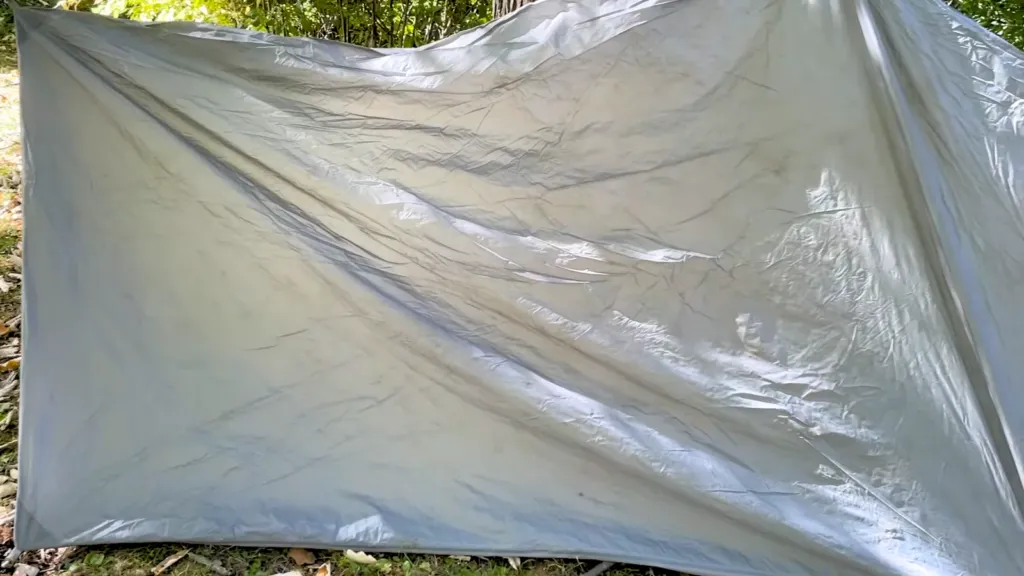
Ever wondered what is the Purpose of Tent Footprint in a Cabin Tent?
Ever spent a restless night in a tent due to a cold, damp floor beneath you? A tent footprint, often overlooked, is your secret weapon for a dry, comfortable, and warm camping experience. Let’s explore why this unsung hero deserves a spot in your camping gear.
Table of Contents
What is the Purpose of Tent Footprint in a Cabin Tent?

The purpose of a tent footprint in a cabin tent is multifaceted, offering enhanced protection, durability, and longevity to your camping setup. Notably, it functions as an additional layer between the ground and your tent floor. This is vital because the bare earth can often contain sharp stones, sticks, and other elements that could potentially damage the tent’s base.
Therefore, a footprint provides an indispensable shield, reducing the risk of rips and wear.
Furthermore, tent footprints aid in preventing moisture from the ground from seeping into the tent. This waterproof barrier allows you to maintain a dry and comfortable environment inside the cabin tent, which can be crucial during rainy or damp conditions. Your camping experience can drastically improve with the extra comfort and security that a footprint provides.
Additionally, a tent footprint can reduce the thermal conductivity between the ground and the tent. Offering this insulation helps to keep the tent warmer during cold nights, which can be particularly beneficial in harsh weather conditions. This way, a tent footprint boosts your overall camping comfort, providing warmth, dryness, and a damage-free base.
Definition of Tent Footprint

A tent footprint, also known as a ground cloth or groundsheet, is a waterproof sheet that is placed between the floor of your tent and the ground. Its primary purpose is to protect the bottom of the tent from abrasion and punctures caused by rough terrains, such as sharp stones, sticks, or other debris.
Besides providing an additional protective layer, it also helps to keep the tent dry by preventing ground moisture from seeping into the tent. Additionally, a tent footprint can provide a bit of insulation, keeping the tent warmer in cold conditions. The footprint is typically sized to match the tent floor’s shape and dimensions, ensuring a perfect fit.
Typical Uses of Cabin Tents
Cabin tents, with their spacious interiors and high ceilings, are ideal for a wide range of uses and provide an at-home-like feel in the outdoors. In my experience, here are a few typical uses:
- Family Camping: Cabin tents are perfect for family camping trips, thanks to their large size. They can comfortably house multiple people and even offer separate ‘rooms’ for privacy.
- Group Outings: Cabin tents are a popular choice for group outings like music festivals, scouting events, or outdoor sporting events. Their size allows for communal gathering and sleeping space.
- Glamping: For those who enjoy the luxury and comfort of home while camping, cabin tents are a great choice. They are large enough to fit air mattresses, cots, or even camping furniture, enhancing the glamping experience.
- Long-Term Camping: For campers planning an extended stay, cabin tents provide a durable and comfortable shelter. Their robust design and room for amenities make them suitable for longer periods.
- Backyard Use: Cabin tents can also serve as extra space in the backyard for sleepovers, playtime, or outdoor parties. They can provide kids with a fun, close-to-home camping experience.
- Emergency Shelter: In situations like home renovations or displacement due to natural disasters, a cabin tent can function as a temporary dwelling, providing necessary shelter and space.
Each use takes advantage of the cabin tent’s defining features: vertical walls, room divisions, and the ability to stand up fully inside, all contributing to their versatility.
How to Choose the Right Footprint for the Cabin Tent
Choosing the right footprint for your cabin tent can significantly enhance your camping experience. The first thing to look at is the size. I would suggest you choose a footprint that matches your tent’s dimensions, covering the area underneath but not extending beyond it. Why is this important? In my experience an extended footprint may collect water during rain, leading to a wet and uncomfortable experience.
Material is the next vital factor to consider. The best tent footprints are durable and waterproof. Often made from polyester or nylon, they resist wear and tear and keep moisture at bay. So, always opt for a high-quality material that will offer superior protection.
Thirdly, consider weight and packability. If you’re a backpacker or a hiker, every ounce matters. You’ll want to choose a footprint that is lightweight and compact, so it doesn’t become a burden during your adventures.
Finally, think about the set-up process. An ideal footprint should be easy to place and secure under your tent. Many footprints come with grommets or loops at the corners for easy attachment to tent poles.
Remember, a tent without a footprint is like a knight without armor. Its protection is diminished and its lifespan is shortened. So, choose wisely, and your tent will reward you with many years of faithful service. Happy camping!
Do I Need a Tent Footprint For My Cabin Tent?
Whether or not you need a tent footprint for your cabin tent largely depends on the type of camping you plan on doing, the terrain you’ll be on, and the specific conditions of your trip. Here are some factors that I also consider:
- Ground Protection: If you’re camping in an area with rough terrain or sharp objects, a footprint can protect the floor of your tent from potential damage. Therefore, in these situations, it would be beneficial to have one.
- Weather Conditions: In damp conditions, a footprint acts as an additional barrier to prevent ground moisture from seeping into your tent. So, if you’re camping in a rainy season or a location known for morning dew or damp ground, a footprint would be a wise investment.
- Tent Durability: High-quality, durable tents might not require a footprint for casual camping. However, even the most robust tents can benefit from an additional protective layer, prolonging their lifespan.
- Insulation: A footprint can provide an extra layer of insulation between you and the cold ground, making your tent slightly warmer. If you’re camping in colder climates, this might be a useful feature.
- Cleanliness: A footprint can help keep your tent clean, as it’s much easier to wash a footprint than an entire tent.
In conclusion, while a tent footprint isn’t always necessary, it can provide additional protection, insulation, and cleanliness, ultimately extending the lifespan of your tent. Therefore, in my experience, it’s often a wise investment for regular campers or those camping in challenging conditions.
Do-It-Yourself (DIY) Tent Footprints
A Step-by-Step Guide to Making a DIY Tent Footprint that I personally use:
- Materials: To start, you’ll need a piece of durable, waterproof material like a heavy-duty tarp, Tyvek, or polycro. You’ll also need a marker, measuring tape, scissors, and grommets or loops for attachment points (optional).
- Measure: Lay your tent out flat and measure its dimensions. Remember, your footprint should be slightly smaller than your tent’s floor to prevent water from pooling.
- Mark and Cut: Mark your measurements on the material, then cut it out. Trim it so it’s a bit smaller than your tent floor.
- Add Attachment Points (optional): For a secure fit, you might want to add grommets or loops at the corners of your footprint. These can be tied to the tent poles or staked to the ground.
Suitable Materials for DIY Footprints:
- Tarp: Heavy-duty tarps are durable, waterproof, and readily available. However, they can be quite heavy and bulky.
- Tyvek: Tyvek is lightweight, water-resistant, and durable. It’s often used in construction but can be purchased online for personal use. It’s a great material for backpackers because it’s light and compact.
- Polycro: Polycro is an extremely lightweight, clear plastic often used for insulating windows. It’s less durable than a tarp or Tyvek, but it’s the lightest option and is
Frequently Asked Questions
What is the purpose of a tent footprint in a cabin tent?
The primary purpose of a tent footprint in a cabin tent is to protect the tent floor from abrasion and punctures caused by rough terrains. It also acts as a barrier against moisture, keeps the inside of your tent clean, provides additional insulation, and extends the lifespan of your tent.
Is a tent footprint necessary for a cabin tent?
While not always necessary, a tent footprint is highly recommended for a cabin tent. It provides extra protection against harsh ground conditions, keeps your tent dry in damp weather, adds an extra layer of insulation, and ultimately extends the lifespan of your tent.
What materials are best for tent footprints?
Durable, waterproof materials like a heavy-duty tarp, Tyvek, or polycro are commonly used for tent footprints. These materials are resistant to punctures and abrasion, ensuring the longevity of your cabin tent.
Can I make a DIY tent footprint for my cabin tent?
Yes, you can make a DIY tent footprint for your cabin tent using readily available materials like a tarp, Tyvek, or polycro. Ensure the DIY footprint matches the size and shape of your tent for effective protection.
How does a tent footprint provide thermal insulation in my cabin tent?
A tent footprint provides thermal insulation by adding an extra layer between your tent and the cold ground, reducing heat loss. This can be particularly beneficial when camping in colder climates.
